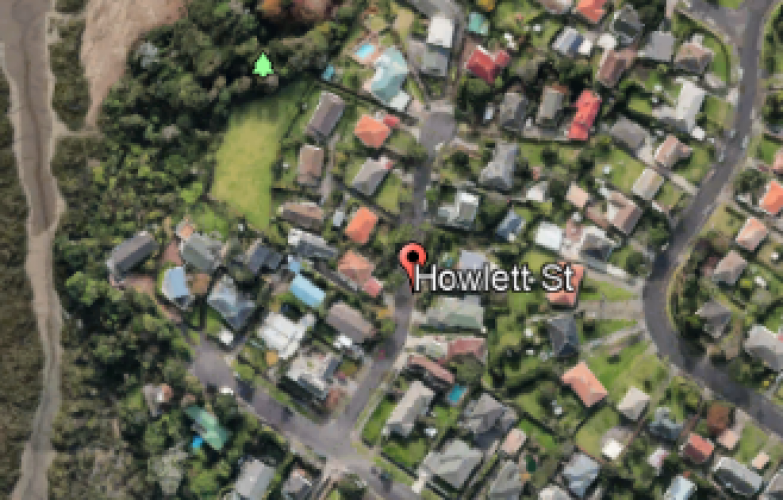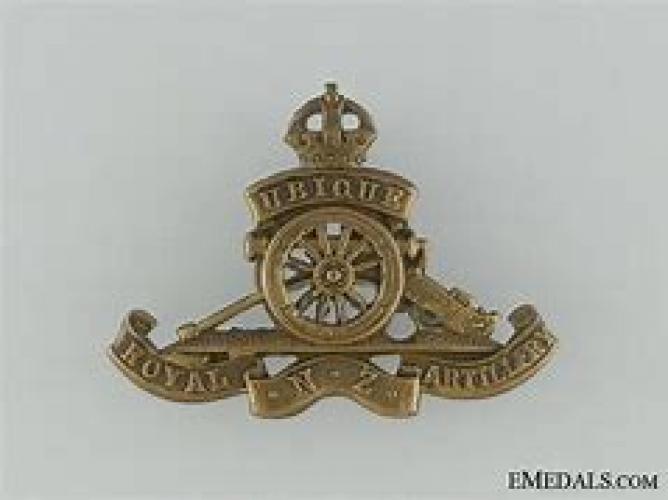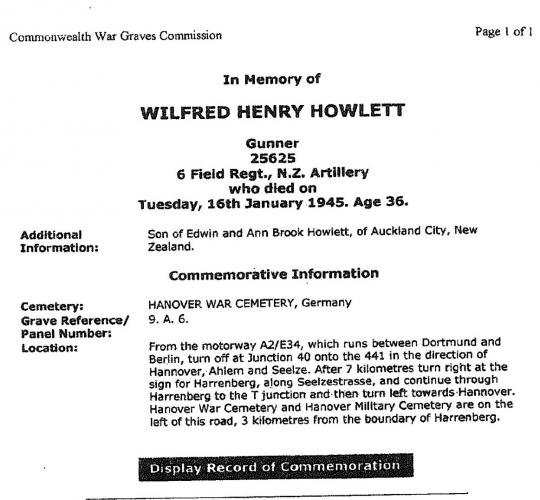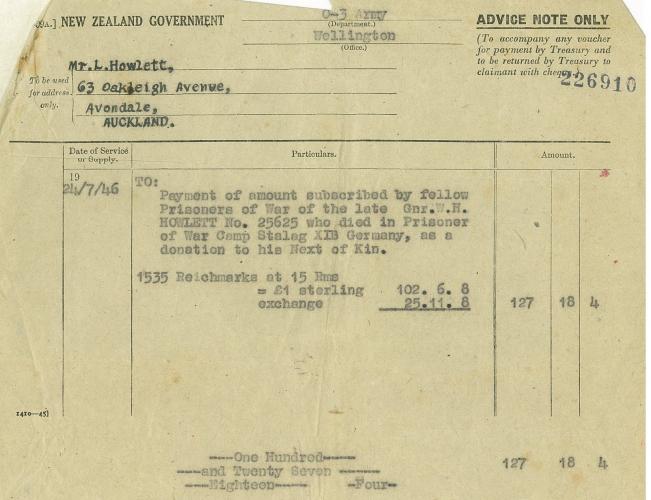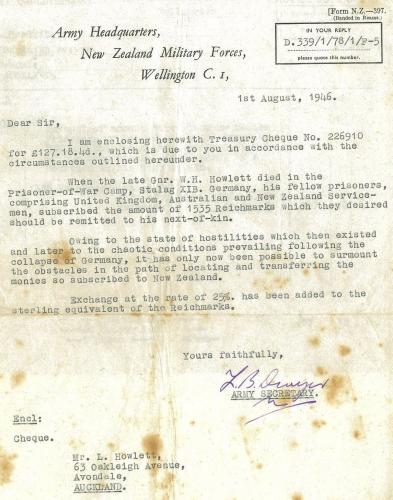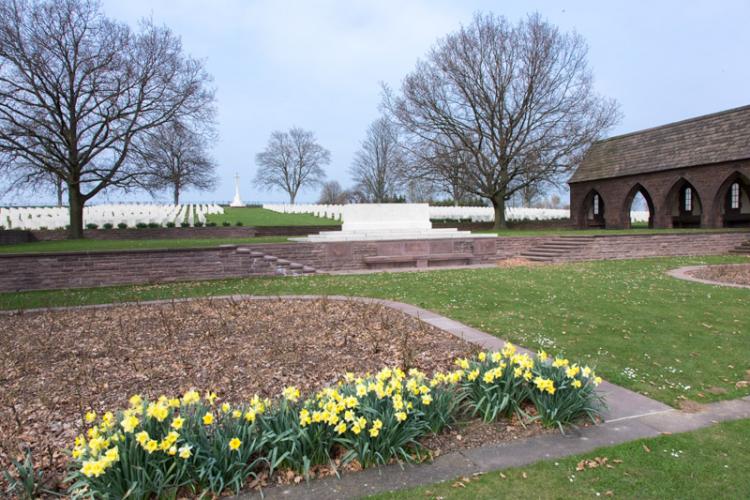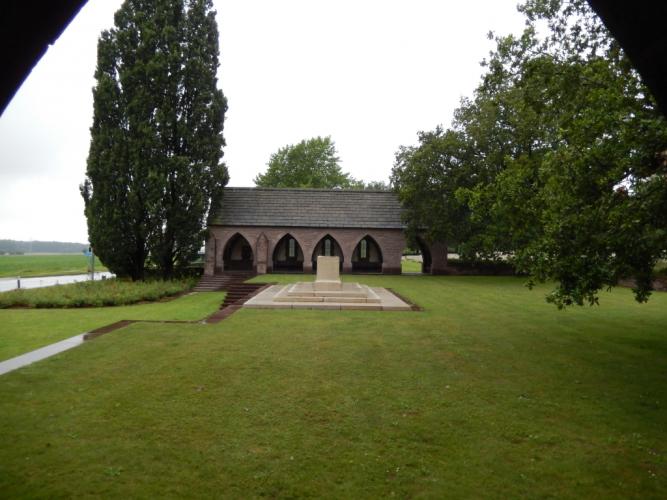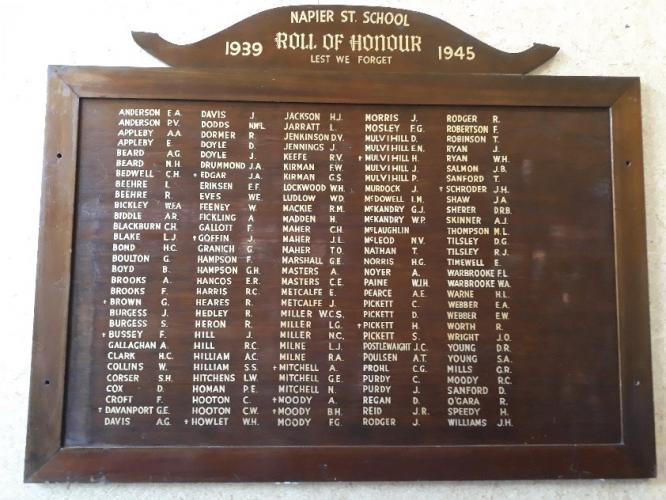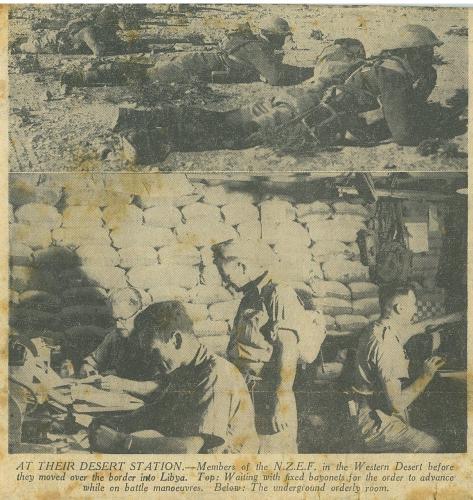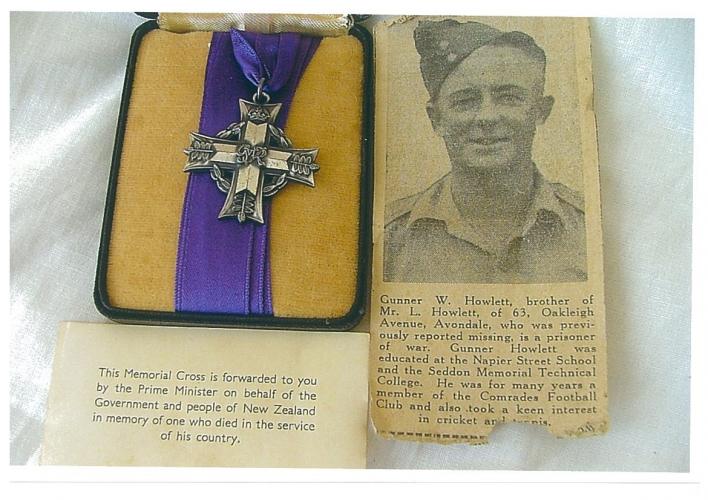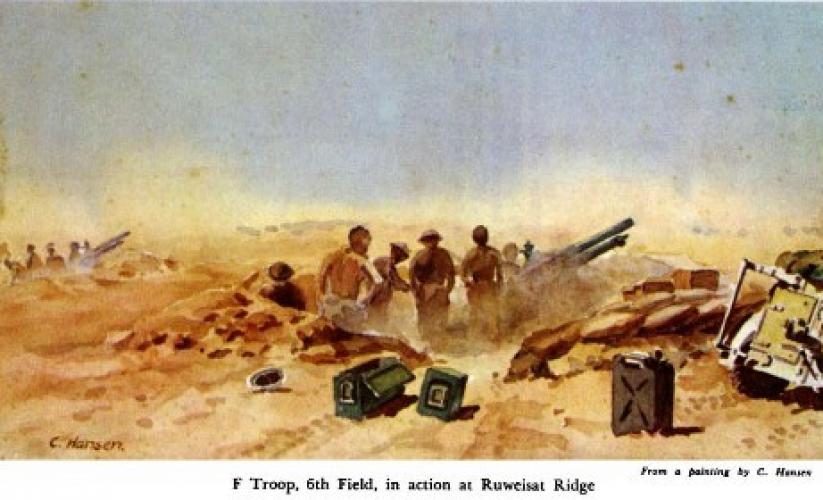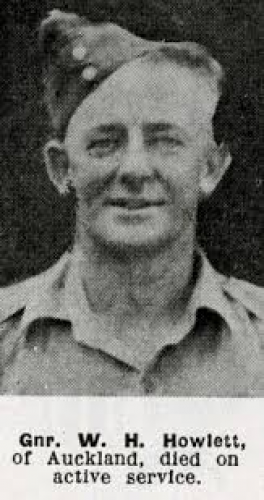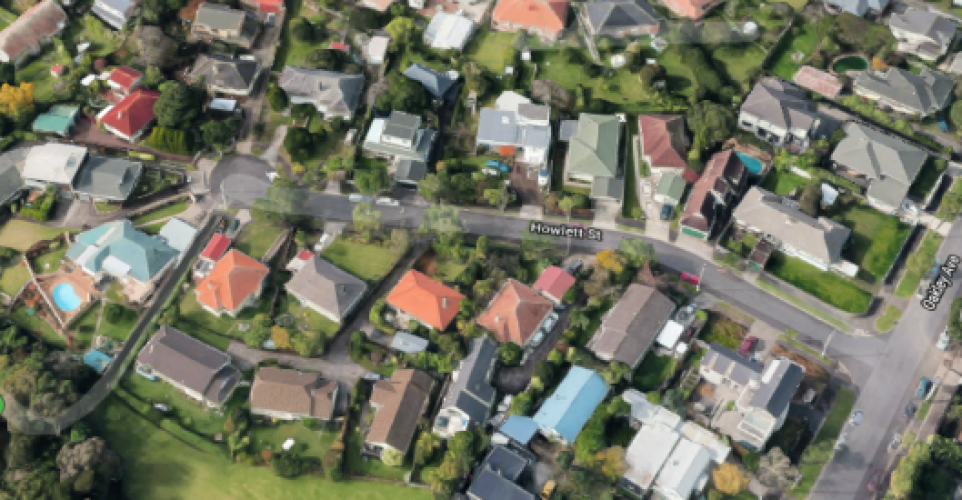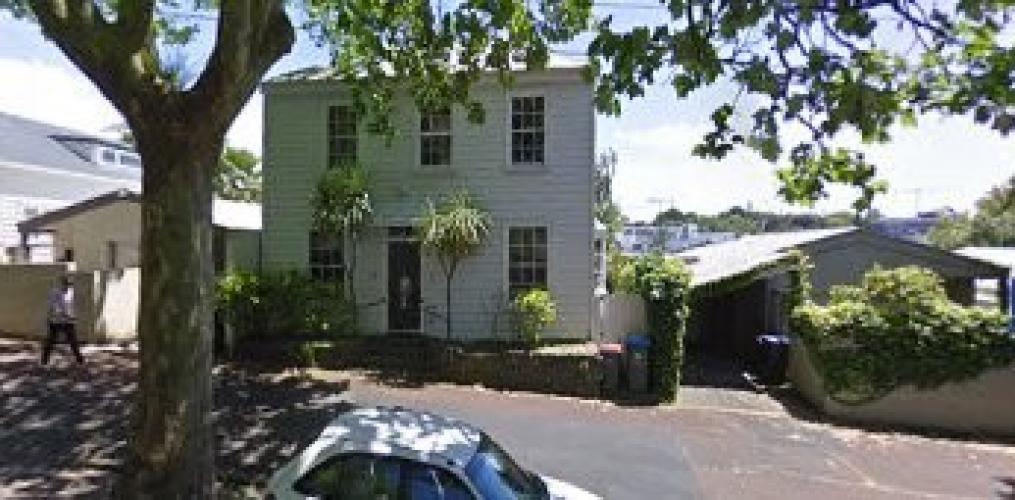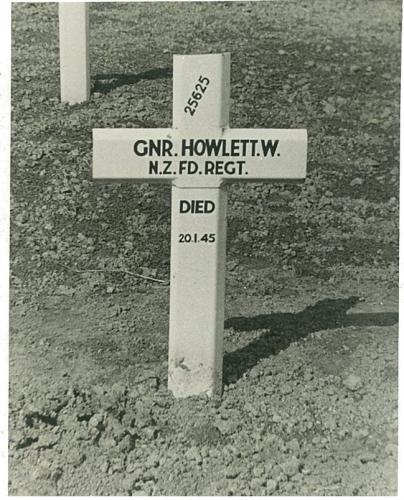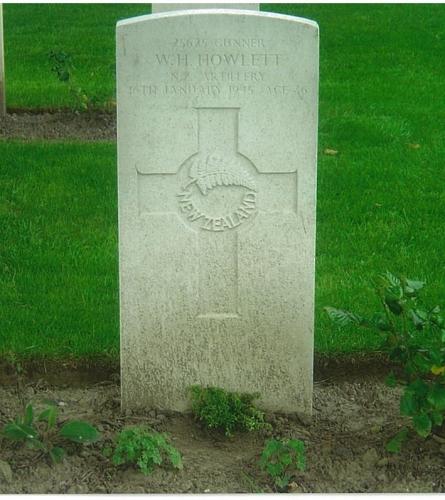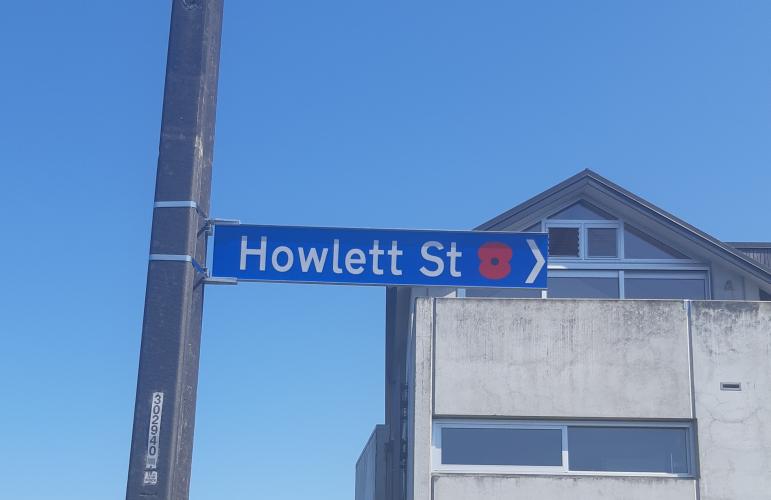178 Howlett Street Auckland, Street scene 2019
Reason for the name
This street is named in honour of 25625 Gunner Wilfred Henry Howlett. B Troop
29th Battery, 6th Field Regiment, Royal New Zealand Artillery. Tragically Wilfred was killed whilst on active service as a Prisoner of War (POW) in 1945.
Wilfred Henry Howlett was a member of 2NZEF and served initially in the Greek campaign. He was eventually evacuated back to Egypt. Wilfred was later captured in Libya during the battle of BelHamed on the 1st December 1941. Wilfred was a member of B Troop, 29th Battery, 6th Field Regiment, RNZA.
Confined in several POW camps through Italy ending up in camp Arb.Kim.7004. X1B situated at Magdeburg near Brunswick North Germany. Wilfred died on the 16 Jan 1945 as a result of a railway accident on a work train. He was buried first at Brunswick Military Cemetery and later re interred at Hanover Military Cemetery after the war ended.
This is a tragic story of dedicated service. Wilfred was 30 years old upon enlistment which was older than the average recruit. He became a POW and was incarcerated for over three years. We can only imagine the frustration, the privations, the danger, the unknown future and the longing for home that he and all other POWs must have experienced. To die through an accident deep in enemy territory towards the end of the war makes Howlett Street Waterview a very worthy “poppy place” tribute indeed.
Author: Ralph Howlett (Nephew), Lynne Cowan (Great Niece) and The Poppy Places Trust
Wilfred Howlett was the son of Edwin and Ann Brook Howlett, of Auckland. Prior to enlistment he was a storeman in civil life. Gunner Howlett was taken into Papakura Camp for his military training prior to embarkation overseas. Information from letters he wrote to his family give a detailed picture of his military service, embarkation overseas and eventual capture in the western desert.
- In Papakura he wrote to say leave wasn’t granted, he spent some time in hospital and there were rumours regarding leave and embarkation details.
- Talk of training and making chairs for the Patriotic Society.
- Talk of conscription being brought in and of manoeuvres in farms and famers not being happy. When training was conducted on farmland care had to be taken during lambing and damage to crops was a real possibility.
- 1940, 8th August a letter written saying he left Papakura by train on the Monday and travelled to Wellington. In Wellington there were 2 grey ships. He couldn't say the name but he was on board the largest ship and was one of the Cunard, White Star Line. Government Tourist people were on board filming and he asked for his family to look for him on the bow if they saw the film.
- The last letter from Papakura Military camp - talks of making his will.
- 1940, 27 August – embarked on a ship.
- 1940, 11 September from sea. 2 weeks after leaving NZ. Arrives at a port where he compares it a lot to Auckland but with beautiful beaches.
- 1940 - Friday at sea - no date but on board ship. Talks of changing ship and visiting a town. In a strip of water 30 miles wide with enemy territory on one side.
- 1940, 21 October. Now in base camp called Maadi a short distance from Cairo - they could see the pyramids.
- 1940, 9 November first air raid.
- 1940, 28 November – talks about wanting to visit the pyramids and riding a camel.
- 1940, 22 December letter saying changed camp to a place called Helwan a good half a day trek from Maadi. They followed the Nile most of the way. Moved to spacious huts with concrete floors.
- 1941, 20th January Wrote of dust storms and tales of fighting from fellow troops that came down from the desert.
- 1941, 24th January. Talks about a great day on the river playing on the river boats. His camp was on the river Nile
- 1941, 10 February A letter from the camp stating interest in the pyramids in Cairo which they see by day but don’t pay too much attention. He visited them and took photos which he said he would send once developed. Travelled to the pyramids by tram. Stated they would be difficult to climb in their army clothing and gear.
- 1941, 30 April Letter stating he had a month in Greece. His first day back. Speaks of the battle and being bombed. (Wilfred must have been evacuated directly back to Egypt and was not involved in the Battle for Crete.)
- 1941, 12 May Telegram sent saying he is safe and well
- 1941, 16 May Talks about his previous letter describing a "Donny Brook" they had just returned from. Also mentions returning from Greece. They have just celebrated the fact that they have been there 12 months. (The Donnybrook Fair was an annual event held in Donnybrook-then a suburb of Dublin, Ireland from the 13th to the 19th centuries. The fair was legendary for the vast quantities of liquor consumed there, for the number of hasty marriages performed during the week following it, and, most of all, for the frequent brawls that erupted throughout it. Eventually, the fair's reputation for tumult was its undoing. From the 1790s on there were campaigns against the drunken brawl the fair had become. The event was abolished in 1855, but not before its name had become a generic term for a free-for-all.)
- 1941, 8 June writes of a harrowing experience and sending a cable to family to let them know he was ok after a battle where many died. He was resting back at his camp.
- 1941, 1 July On holiday in Cairo. When returning he was going to be moving to a new camp. Again spoke of being in Greece and getting no support from the RAF – saying the RAF was the ruination of the ANZAC forces, it could have made all the difference in the world and they may still have been there now.
- 1941, 19 July another change of camp. Talks of the last few days of his holiday in Cairo.
- 1941, 23 August Talks of going on manoeuvres up the river Nile for quite some distances.
- 1941, 6 September in camp not far from Cairo. Had a celebration to mark being 12 months since leaving NZ.
- 1941, 28 September Talks of scorpions and snakes. Moving to smaller 2 man tents from the 6 man tents.
- 1941, 12th October Letter talks about desert life and how ready and fit they all are to go to battle.
- 1941, 5 November Xmas card received. He talks of being in a dugout. The card especially made for 2nd NZ Expeditionary Force. Middle East.
- 1941, 8 November he asks about Guy Fawkes night and mentions that Jerry let them down badly and didn't give them a show at all though several nights before that and since then he had been pretty consistent in coming over and giving quite a display. (These comments probably relate to counter Artillery fire)
- 1941, 27 November. Letter wishing all a Merry Xmas with statement getting ready to move now (to the front line)
- 1941, 1st December Wilf captured in the morning at BelHamed, Libya.(In November 1941 the 2nd NZ Division entered the fray in Operation Crusader, designed to relieve the siege on the port of Tobruk in Libya and defeat the Axis force which had driven east into Egypt. In this confused battle about 700 New Zealanders were taken prisoner when their units were overrun, most notably at Sidi Rezegh and BelHamed. But the outcome was satisfactory, the link up was made with Tobruk, and Rommel’s forces retreated.)
- (During the Second World War New Zealanders in large numbers became prisoners of war, or went 'into the bag' as they popularly called it. One in 200 of New Zealand's population of the time were held in captivity—over 8000 people. This compares with around 500 POWs in the First World War. While most Second World War POWs were servicemen taken on the field of battle, several hundred civilians and merchant seamen were also interned. Most of these prisoners probably knew when captured that their status was covered by international agreements, without being aware of the details. The 97 articles of the 1929 Geneva Convention included provision for the adequate sustenance and humane treatment of POWs, and for relief by the International Red Cross Committee. The holding power had the right to put to work POWs other than those of officer or NCO status, though not on tasks of a direct military nature. The Convention, in short, offered a substantial degree of protection to POWs—provided it was recognised and applied by the holding power.)
- 1942, 23 February Telegram received saying Wilf was taken prisoner of War.
- 1942, 25 February - The Auckland Star - listed as being previously reported missing.
- 1942, 9 June - Letter from Military Forces saying Wilf was at Comp P.G.52 Posta Military 3100 Italy.
- 1942, 23 November - Card stating parcel of Tobacco received by Wilf at PG52 PM3100 Italy
- 1943, 8 April Letter from Military Forces saying he is now at Campo P.G. 57,P.M. 3200, Italy
- 1943, 22 April - Letter from NZ Military Forces regarding Wilfs personal items being held in trust.
- 1943, 27 July - Letter from NZ Military Forces saying he was now at C.C.P.G. 103/6, P.M. 3200 Italy.
- 1944, 25 May - Card stating parcel of tobacco received - addressed to camp in Italy but received by Wilf in Falling Bostel KDO 7004 (or 1004)
- 1944, 9 November - Card sending tobacco to KDO 7004 Falling Bostel X1B - Stating POW No.139797
- Wilf was killed on 16 January 1945.
Wilf’s family was advised of his death through military channels but there were no details. In a search for information Wilf’s brother Laurence Howlett placed advertisements in the local Auckland papers and on 8 October 1945 a letter was received from Private H. Pharo of Owhanga describing Wilf's death. Mr Pharo thought Wilf was Laurence’s son and refers to him as such. The letter is retyped here, the original is held by Lynne Cowan:
24234 Pte H Pharo
Owhango Planing Mill
Owhango
8/10/1945
c/4 /!I
Dear Sir,
Glancing through the personal column of Saturdays papers I noticed your enquiry regarding your son.
I happened to be at the working camp namely Arb.Kom.7004.X1B situated near Brunswick in North West Germany, where your son Wilf was another unfortunate POW.
The particular day of his death we were all riding together on the German contractor Karl Plinkes work train. We had about 3kms to go to our job on a bitterly cold day. Your son was standing on the front platform of a crowded carriage. Half way to the job we picked up the German Baufuhrer; to call him an ordinary foreman would be a misnomer, as men of this type in Germany, practically had the power of life and death in their hands, so I have used the German title. The presence of this individual frightened the wits out of the driver who incidentally was himself a German. Being a few minutes late he opened the throttle full out and all went well until we came to a grade where the line ran across the roadway. As I have already stated it was a raw bitter morning with the temperature below zero. This of course made the earth inside the lines frozen & like all crossings the earth was flush with the rails.
The driver tore at this grade full out but the sudden jolt pulled the hook & the fore part of the carriage apart. Wilf was leaning against this & lost balance falling with his legs across the rail. The wheels went over him & he was dragged by the broken undercarriage which turned him over and over until the vehicle came to a rest. The German foreman borrowed a ladder from the neighbouring village & we covered this with our great coats making him as comfortable as we could. He was taken to one or two hospitals nearby where they had no facilities to fix him up. Finally he was taken to Brunswick Military Hospital where he died, I believe half an hour after admittance. I don’t think from what I saw that much could have been done to save his life as he was very badly smashed up. He was conscious all the while he was near us & considering the pain he must have been suffering, bore himself very well indeed.
He was buried in Brunswick Military Cemetery. One of the lads in Camp named Robert Boivin of Invercargill made the wreath & the funeral service was conducted by a lay preacher, Bugler Jack Cartwright of the Duke of Cornwall’s Light Infantry who incidentally was a very close friend of mine. His present address is: Heron Hall Farm Cottage, Herongate, Brentwood, Essex, England. He could tell you more about your son’s last resting place than anybody.
From your enquiry I thought you wanted the true circumstances of Wilfred’s death. If I have cut you up at all may I offer my sincere regrets & in any case my condolences in your bereavement.
Yours Sincerely,
LH Pharo
My postal address is:
c/o Mrs Dunne
59 Nugent Street
Auckland C.3


